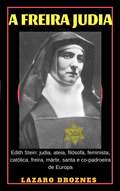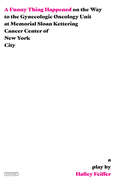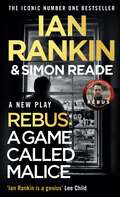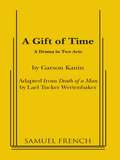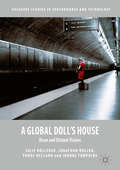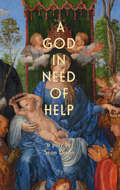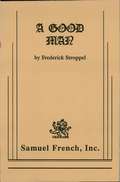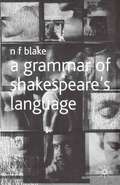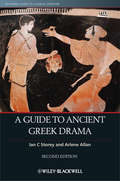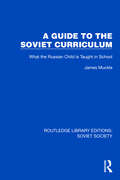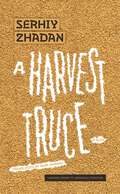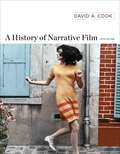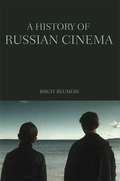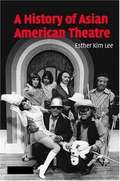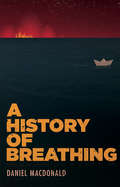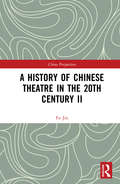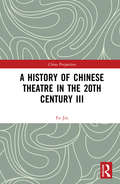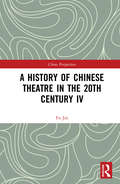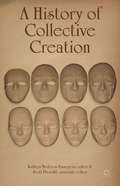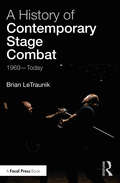- Table View
- List View
A Free Man of Color (Books That Changed the World)
by John GuareThe Tony Award-winning playwright spins “a tale of adultery, racism and the Louisiana Purchase…with daring and dizzying skill” (Ben Brantley, The New York Times).The author of classics American plays such as Six Degrees of Separation and The House of Blue Leaves, Tony and Obie Award-winning playwright John Guare is celebrated for his theatrically playful, intellectually dazzling imagination. His play “A Free Man of Color evolves from a bustling farce into something deeper and darker but similarly exhilarating” (USA Today).A Free Man of Color is set in boisterous New Orleans prior to the historic Louisiana Purchase. Before law and order took hold and class, racial, and political lines were drawn, New Orleans was a carnival of beautiful women, flowing wine, and pleasure for the taking. At the center of this Dionysian world is Jacques Cornet, a mixed-race gentleman who commands men, seduces women, and preens like a peacock. But it is 1801 and the map of New Orleans is about to be redrawn. The Louisiana Purchase brings American rule and racial segregation to the chaotic, colorful world of Jacques Cornet and all that he represents, turning the tables on freedom and liberty.
A Freira Judia
by Lázaro Droznes Ana Carla Barros SobreiraEdith Stein é uma filósofa judia alemã que se converteu ao catolicismo, uma freira carmelita. Foi enviada para Auschwitz em retaliação pelos protestos do clero holandês para o tratamento dos judeus, assassinada, canonizada pela Igreja Católica e finalmente declarada Santa e co-padroeira da Europa. Essa ficção dramática que ocorre em Auschwitz apresenta a visita de um ex-colega da Universidade que pede sua colaboração para gerar os fundamentos doutrinários de uma nova religião que é funcional para o regime nazista. Edith se recusa e é enviada para a câmara de gás e para o crematório. Edith Stein e sua tremenda trajetória de vida resume as características essenciais da maior tragédia do século XX: o nazismo.
A Funny Thing Happened on the Way to the Gynecologic Oncology Unit at Memorial Sloan Kettering Cancer Center of New York City: A Play
by Halley Feiffer“Raunchy and fearless . . . Halley Feiffer’s distinct voice is on display throughout, in all its uniquely unsettling glory.” —David Gordon, Theatermania “I’ve been single for so long, I’ve started having sexual fantasies about my vibrator,” riffs Karla for her captive, cancer-ward audience. The patients—her mother, who’s recovering from surgery for ovarian cancer, and her roommate behind the curtain, aren’t laughing—or even awake—but there’s someone else in the room . . . In Halley Feiffer’s “ painfully irresistible” (The New York Times) new play, a foul-mouthed twenty-something comedian and a middle-aged man embroiled in a nasty divorce are brought together unexpectedly when their cancer-stricken mothers become roommates in the hospital. Together, this unlikely duo must negotiate some of life’s biggest challenges . . . while making some of the world’s most inappropriate jokes. Can these two very lost people learn to laugh through their pain and lean on each other when all they really want to do is run away? In A Funny Thing Happened on the Way to the Gynecologic Oncology Unit at Memorial Sloan Kettering Cancer Center of New York City, Halley Feiffer slays in a work that’s dark and disturbing and yet totally hilarious. The acclaimed world premiere at MCC Theater featured Beth Behrs, Erik Lochtefeld, Lisa Emery, and Jacqueline Sydney, and was directed by Trip Cullman.
A Galway Girl
by Geraldine AronDrama / Characters:1 male, 1 femaleScenery: Interior. A couple sit at opposite ends of a table reminiscing about their life together. Each has a point of view and they rarely address each other directly. They are young to begin with, then middle aged, then old, then one dies. The anecdotes they relate are both humorous and tragic. Their lives seem wasted, yet the wife's muted final gesture of affection conveys a love that endured through years of bickering. A critical success in London, Ireland and the author's native South Africa. "A minute tapestry cross stitched with rich detail-- invested with a strong strain of uncomfortable truths."-- Irish Times.
A Game Called Malice: A Rebus Play
by Ian Rankin Simon ReadeA delicious, and somewhat drunken, dinner party segues into a murder mystery game created by the hostess. However, the parlour game may hold clues about the dark truths hiding just under the surface of this genteel gathering...As suspects, clues and red herrings are sifted - it seems one of the guests has an unfair advantage: John Rebus, an ex-detective who used to do this for a living. But is he playing another game, one to which only he knows the rules, that will soon be revealed? As the tension rises, one by one, all their secrets will come out - and there is a shocking discovery that awaits them all...
A Game Called Malice: A Rebus Play
by Ian Rankin Simon ReadeA delicious, and somewhat drunken, dinner party segues into a murder mystery game created by the hostess. However, the parlour game may hold clues about the dark truths hiding just under the surface of this genteel gathering...As suspects, clues and red herrings are sifted - it seems one of the guests has an unfair advantage: John Rebus, an ex-detective who used to do this for a living. But is he playing another game, one to which only he knows the rules, that will soon be revealed? As the tension rises, one by one, all their secrets will come out - and there is a shocking discovery that awaits them all...
A Gift of Time
by Garson KaninDrama / 5m, 5f, extras / 4 sets / An American editor resigns his post and moves to France with his wife and two children to spend his time in writing important books. But all too shortly he learns that he is dying of an inoperable cancer, and forthwith determines to live every day, hour, and minute to the fullest: life is a gift of time. Gradually he begins to feel the pain and physical consequences of his affliction. Unfortunately, he even becomes immunized to morphine. He decides, therefore, to bear the pain and the debilities so long as his faculties remain. At that point, with his wife holding him tightly and murmuring, "I love you. Please die," he cuts his wrists and ends the agony. In the Broadway roles, Henry Fonda played the dying husband, and Olivia de Havilland, his wife. / The "affirmation of the dignity of man in the face of the remorseless enemy - mortality. Will shake you and move you. Shining tenderness. Celebrates with tenderness and humor the gifts of love and understanding that make life worth living." - N. Y. Times.
A Global Doll's House: Ibsen and Distant Visions (Palgrave Studies in Performance and Technology)
by Julie Holledge Jonathan Bollen Frode Helland Joanne TompkinsThis book addresses a deceptively simple question: what accounts for the global success of A Doll's House, Henrik Ibsen's most popular play? Using maps, networks, and images to explore the world history of the play's production, this question is considered from two angles: cultural transmission and adaptation. Analysing the play's transmission reveals the social, economic, and political forces that have secured its place in the canon of world drama; a comparative study of the play's 135-year production history across five continents offers new insights into theatrical adaptation. Key areas of research include the global tours of nineteenth-century actress-managers, Norway's soft diplomacy in promoting gender equality, representations of the female performing body, and the sexual vectors of social change in theatre.
A God in Need of Help
by Sean DixonIt's 1606 and Europe is at war over God. At the behest of the Holy Roman Emperor, Rudolf II, Venice's four strongest men are charged with transporting a holy painting -- Albrecht Dürer's The Brotherhood of the Rosary -- across the Alps to Prague. In the small Alpine village of Pusterwald, they are set upon by Protestant zealots; their escape is attributed to a miracle. The strongmen and their captain are summoned to an inquiry, led by the magistrate of Venice and the cardinal archbishop of Milan, to determine whether something divine did indeed occur. Each man's recounting adds a layer of colour to the canvas. Through this vividly painted mystery, inspired by true events, Sean Dixon challenges the role of faith at the dawn of the Age of Reason.
A Good Man
by Frederick StroppelComedy / 5m, 4f / Interior / It's a hot July day at the Good Shepherd Funeral Parlor and Martin Lamb, the mortician, is presiding over the wake of the late Walter Porteus. His dream of a perfect wake is undermined by his son Jimmy, whose interests are more amatory than funereal, and by the conniving, contentious Porteus family members, who are already clashing over the will. To further inflame matters, the air conditioning breaks down and the wrong body turns up in the casket. Then a mysterious mourner appears and a valuable piece of jewelry disappears. When the air conditioning repairman pulls a gun and decides to hold them all hostage, things really start to get interesting in this hilarious black comedy.
A Grammar of Shakespeare’s Language
by N. F. BlakeWhen you read Shakespeare or watch a performance of one of his plays, do you find yourself wondering what it was he actually meant? Do you consult modern editions of Shakespeare's plays only to find that your questions still remain unanswered? A Grammar of Shakespeare's Language, the first comprehensive grammar of Shakespeare's language for over one hundred years, will help you find out exactly what Shakespeare meant. Steering clear of linguistic jargon, Professor Blake provides a detailed analysis of Shakespeare's language. He includes accounts of the morphology and syntax of different parts of speech, as well as highlighting features such as concord, negation, repetition and ellipsis. He treats not only traditional features such as the make-up of clauses, but also how language is used in various forms of conversational exchange, such as forms of address, discourse markers, greetings and farewells. This book will help you to understand much that may have previously seemed difficult or incomprehensible, thus enhancing your enjoyment of his plays.
A Guide to Ancient Greek Drama (Blackwell Guides to Classical Literature #3)
by Arlene Allan Ian C. StoreyThis newly updated second edition features wide-ranging, systematically organized scholarship in a concise introduction to ancient Greek drama, which flourished from the sixth to third century BC. Covers all three genres of ancient Greek drama – tragedy, comedy, and satyr-drama Surveys the extant work of Aeschylus, Sophokles, Euripides, Aristophanes, and Menander, and includes entries on ‘lost’ playwrights Examines contextual issues such as the origins of dramatic art forms; the conventions of the festivals and the theater; drama’s relationship with the worship of Dionysos; political dimensions of drama; and how to read and watch Greek drama Includes single-page synopses of every surviving ancient Greek play
A Guide to the Soviet Curriculum: What the Russian Child is Taught in School (Routledge Library Editions: Soviet Society)
by James MuckleA Guide to the Soviet Curriculum (1988) surveys the syllabuses for schoolchildren in the Soviet education system following the reforms of 1984. Every subject in the common timetable is covered, and teaching methods, hopes for the future and continuing controversies are discussed. All this is set in the broader context of curriculum philosophy and of the social and moral purposes of Soviet education; the implicit or ‘hidden’ curriculum is also considered.
A Handbook of Costume Drawing: A Guide to Drawing the Period Figure for Costume Design Students
by Georgia BakerPerfect for students of costume design and history, A Handbook of Costume Drawing illustrates and describes the dominant male and female costume silhouettes for major historical periods ranging from Egyptian dynasties through the 1960s. Important details, including head and footwear, hair styles, fashion accessories, shoulders, waist, hem, and neckline are provided to maximize the historical accuracy of each design and to help you fully recreate the look and feel of each period.
A Harold Pinter Chronology
by William BakerThe most detailed chronological account of Harold Pinter to appear, this new volume in the Author Chronologies series traces the daily activities of the Nobel Prize winning author. It is based upon published and unpublished materials, and discussion with his close friends, and is a basic reference tool for all Pinter students and scholars.
A Harvest Truce: A Play (Harvard Library of Ukrainian Literature #9)
by Serhiy ZhadanBrothers Anton and Tolik reunite at their family home to bury their recently deceased mother. An otherwise natural ritual unfolds under extraordinary circumstances: their house is on the front line of a war ignited by Russian-backed separatists in eastern Ukraine. Isolated without power or running water, the brothers’ best hope for success and survival lies in the declared cease fire—the harvest truce. But such hopes are swiftly dashed, as it becomes apparent that the conflagration of war will not abate.With echoes of Waiting for Godot, Serhiy Zhadan’s A Harvest Truce stages a tragicomedy in which the commonplace experiences of death, birth, and the cycles of life marked by the practices of growing and harvesting food are rendered futile and farcical in the wake of the indifferent juggernaut of war.
A History Of Narrative Film
by David CookA trusted reference, a popular teaching text, and a well-written history is now bolder, briefer, and better than ever. <P><P> Sophisticated in its analytical content, current in its coverage, and informed throughout by fascinating historical and cultural contexts, A History of Narrative Film is one of the most respected and widely read texts in film studies. This Fifth Edition features a new chapter on twenty-first century film, and includes refreshed coverage of contemporary digital production, distribution, and consumption of film. Now 20% shorter, with new four-color design and an updated art program, A History of Narrative Film is also the only film history text available as an ebook.
A History Of Russian Cinema
by Birgit BeumersFilm emerged in pre-Revolutionary Russia to become the 'most important of all arts' for the new Bolshevik regime and its propaganda machine. The 1920s saw a flowering of film experimentation, notably with the work of Eisenstein, and a huge growth in the audience for film, which continued into the 1930s with the rise of musicals. The films of the Second World War and Cold War periods reflected a return to political concerns in their representation of the 'enemy'. The 1960s and 1970s saw the rise of art-house films. With glasnost came the collapse of the state-run film industry and an explosion in the cinematic treatment of previously taboo topics. In the new Russia, cinema has become genuinely independent, as a commercial as well as an artistic medium. <p><p> A History of Russian Cinema is the first complete history from the beginning of film to the present day and presents an engaging narrative of both the industry and its key films in the context of Russia's social and political history.
A History of Asian American Theatre (Cambridge Studies in American Theatre and Drama #26)
by Esther Kim LeeIn 1965, the first Asian American theatre company, the East West players, was founded by a group of actors who wanted to find better opportunities in the acting industry. Forty years later, Asian American theatre is one of the fastest-growing theatre sectors with over thirty active theatre companies and numerous award-winning artists such as Frank Chin, Jessica Hagedorn, Ping Chong, David Henry Hwang, Philip Kan Gotanda, Velina Hasu, and B. D. Wong. Based on over seventy interviews, this book surveys the history of Asian American theatre from 1965 to 2005 with focus on actors, playwrights, companies, audiences, and communities. Emphasizing historical contexts, Esther Kim Lee examines how issues of cultural nationalism, interculturalism, and identity politics affect a racially defined theatre. Addressing issues ranging from actor's activism to Asian Diaspora, the book documents how Asian American theatre has become an indispensable part of American culture.
A History of Breathing
by Daniel MacdonaldTwo boats float aimlessly on an ocean that conceals the remains of civilization and history. One boat carries a father and daughter, the last survivors of an unspeakable catastrophe; the other carries the only hope for a new beginning. Daniel Macdonald crafts a stunning tale of myth and reality at the end of the world and at its creation.
A History of Chinese Theatre in the 20th Century II (China Perspectives)
by Fu JinThe 20th century was a dynamic period for the theatrical arts in China. Booming urban theatres, the interaction between commercial practice and theatre, dramas staged during the War of Resistance against Japan and a healthy dialogue between Western and Eastern theatres all contributed to the momentousness of this period. The four volumes of A History of Chinese Theatre in the 20th Century display the developmental trajectories of Chinese theatre over those 100 years.This volume deals with the development of Chinese theatre from 1949 to 2000, covering the fluctuations of 'drama reform', spectacles of the 'Cultural Revolution', and theatre in the immediate years before the opening up of the country. The author demonstrates how Chinese dramatic traditions endured and adapted in the face of modernity and how politics and art interacted.By combining academic rigour with a high degree of readability, this volume is both an essential guide for scholars and students in the history of the arts and general readers interested in Chinese theatre.
A History of Chinese Theatre in the 20th Century III (China Perspectives)
by Fu JinThe twentieth century was a dynamic period for the theatrical arts in China. Booming urban theatres, the interaction between commercial practice and theatre, dramas staged during the War of Resistance against Japan and a healthy dialogue between Western and Eastern theatres all contributed to the momentousness of this period. The four volumes of A History of Chinese Theatre in the 20th Century display the developmental trajectories of Chinese theatre over those hundred years. This volume examines national policies developed for the culture industry and practice of Chinese theatre from 1949 to the period of "the Great Leap Forward". The author highlights the tension between the new nation’s principle of "letting one hundred flowers bloom" and the theatrical industry as a tool for ideological propaganda. He argues that the transition from war-time conditions to the new social structure of peace time was far from thorough and stable. Scholars and students in the history of the arts, especially the history of Chinese theatre, will find this book to be an essential guide.
A History of Chinese Theatre in the 20th Century IV (China Perspectives)
by Fu JinThe 20th century was a dynamic period for the theatrical arts in China. The four volumes of A History of Chinese Theatre in the 20th Century display the developmental trajectories of Chinese theatre over those hundred years. This volume examines the development of Chinese theatrical art from the Cultural Revolution to the end of the 20th century. The Cultural Revolution had a devastating influence on the theatrical profession, reducing the creation of performance art to serving the political authorities. Adopting a critical view, the author argues that the Reform and Opening-up of the late 1970s not only ended this period of political interference, but also brought about chaos and doubts to the theatrical circle, since neither tradition nor western concepts were a panacea for the problems faced by Chinese theatre. He posits that people should advocate patterns of drama that are rich and colourful in their expression while encouraging the coexistence and competition of different artistic concepts. Scholars and students in the history of the arts, especially the history of Chinese theatre, will find this book to be an essential guide.
A History of Collective Creation
by Kathryn Mederos Syssoyeva Scott ProudfitCollective creation - the practice of collaboratively devising works of performance - rose to prominence not simply as a performance making method, but as an institutional model. By examining theatre practices in Europe and North America, this book explores collective creation's roots in the theatrical experiments of the early twentieth century.
A History of Contemporary Stage Combat: 1969 - Today
by Brian LeTraunikA History of Contemporary Stage Combat chronicles the development of stage combat from the origins of the Society of British Fight Directors in 1969 to the modern day. Featuring interviews with some of the pioneers of this art form, the book analyzes how stage combat developed in response to the needs of the industry and the changing social mores in the United States, United Kingdom, Canada, the European Continent, Australia, and New Zealand. It also explores the quality of theatrical weaponry, as well as outcropping of stage combat such as intimacy design and theatrical jousting. A History of Contemporary Stage Combat is an excellent resource for actors, directors, stage combatants, theatre historians, and anyone with a love of action on stage and film.

